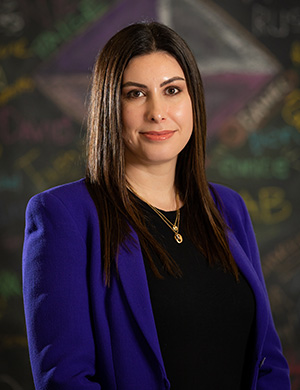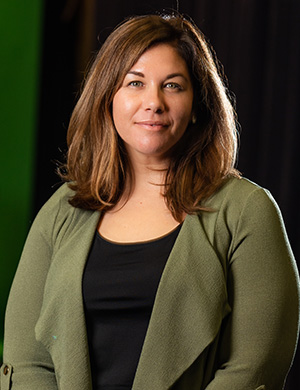Identity at the Local Level
When it comes to revitalizing local news, media organizations would do well to think about identity, says Medill professor and Local News Initiative member Rachel Davis Mersey ’01 MS. An audience expert and former print and broadcast reporter, Mersey has spent a large part of her career working to understand how people’s unique social identities relate to and engage with media.

Rachel Davis Mersey
According to Mersey’s research, one of the reasons people consume news is to receive positive feedback on their social identities, be they “professor,” “mother,” “Asian American,” etc.
“People tend to consume media that makes them feel as good as they can about who they are,” Mersey says. “I don’t want to read a story that says all professors are not interested in hearing viewpoints they might disagree with. It’s no wonder millennials stopped reading the news. The news kept saying how lazy millennials are.”
Collaborating with both national and local news organizations, Mersey is helping media outlets understand our tendency to want to feel as positive as possible.
“Local news really needs to think about subsets of the audience in their local market, which are shaped by social identity,” Mersey says. “For example, if you identify as an involved parent, local news should offer you stories that engage with that identity. And in that process, local news might even tell you something about the social safety net, for example, that tangentially engages with your ‘parent’ identity and that you didn’t yet know you were interested in.”





Reader Responses
Some observations on the article:
The piece assigns the name “Conservative News Loyalists” to those who watch Fox News, listen to conservative talk radio, etc. Why don’t you more appropriately re-label “Digital News Mixers” as “Liberal News Loyalists” instead, because aren’t they the primary audience who watches NPR, CNN, CNBC, NBC, ABC, CBS, etc.? If you want to use the word “Conservative,” please don’t hesitate to appropriately use the word “Liberal.”
How can the demand for local news be so high if, as the article notes, as much as 48% of the population are news avoiders? Does this 48% represent pent-up demand? The other 52% of the overall news-watching or news-reading market is already segmented into the categories you designated. Why not concentrate your efforts on this remaining 48% as fertile territory, if in fact this group of the population is yearning to be served as a viable local news market?
Before you start segmenting the market that presumably local news organizations should target, I’d recommend learning exactly why specific papers — and if applicable, specific local TV/cable news outlets — have been failing. If an entity's strength as a local paper or TV or radio station is serving local to locals, focus on doing that extraordinarily well. Leave the national and international content to others whose business model and budget you cannot match.
Thank you for the chance to comment.
—Jeffrey Kollum '72 MBA, Chicago, via Northwestern Magazine
As a former journalist (once a Medill student), I’m especially interested in the insightful commitment to strengthen the important work of expository reporting and the critical role of local news.
Thank you. I look forward to future issues.
—Sally Newhouse Becker '67, Chicago and Venice, Fla., via Northwestern Magazine
No one has commented on this page yet.
Submit a Response